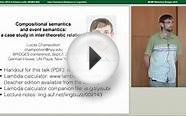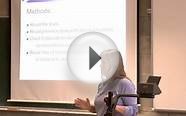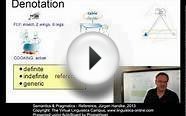
What is semantics and pragmatics language?
The term 'semantic pragmatic disorder' has been around for nearly l5 years. Originally it was only used to describe children who were not autistic.
Features it includes are:-
- delayed language development
- learning to talk by memorising phrases, instead of putting words together freely
- repeating phrases out of context, especially snippets remembered from television programmes
- muddling up 'I' and 'you'
- problems with understanding questions, particularly questions involving 'how' and 'why'
- difficulty following conversations
Children with this disorder have problems understanding the meaning of what other people say, and they do not understand how to use speech appropriately themselves.
Soon both research and practical experience yielded two important findings:
- Many people who definitely are autistic have this kind of language disorder (Dustin Hoffman's character Raymond in the film 'Rainman' being a typical example).
- Most of the children diagnosed as having semantic pragmatic disorder do also have some mild autistic features. For example, they usually have difficulty understanding social situations and expectations, they like to stick fairly rigidly to routines, and they lack imaginative play.
For a while some language therapists maintained there was still an important difference between children with semantic pragmatic disorder and children who were truly autistic. They believed the autistic features seen in children with semantic pragmatic disorder were only a result of their difficulty with language.
However, further research has shown that there is probably a single underlying cognitive impairment which produces both the autistic features and the semantic pragmatic disorder . The fact that children with semantic pragmatic disorder have problems understanding the meaning and significance of events, as well the meaning and significance of speech, seems to bear this out.
Eventually the idea of an autistic continuum was used to explain the situation. All the children on the continuum have semantic pragmatic difficulties, but the degree of their other autistic impairments can be severe or moderate or mild. This parallels the autistic continuum relating Asperger syndrome, where all the children have a marked social impairment but those with Asperger syndrome have only a relatively mild and subtle language impairment.
You might also like













